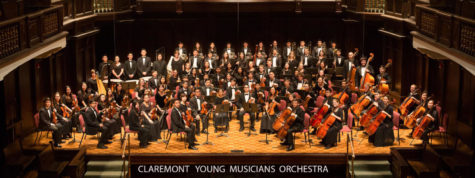IB Remarkably Increases in Popularity at CHS
One of the CHS’s most impressive opportunities is being able to take part in the IB Program. This program is run by an educational organization that countries all over the world take part in. For high school students, there are two different educational programs that can be taken: the IB Diploma Program and the IB Career-Related Program. The IB Diploma Program focuses more on academic studies, while the IB Career-Related Program focuses more on preparing for a stable career in the future for students. Aside from IB, AP is also offered at CHS; however, the IB community has continued to grow.
The IB Program consists of an academic program with a coordinated education. A student’s plan for 11th and 12th grade is already planned out near the end of 10th grade, if he or she chooses to do IB. One major part of IB’s workload is an internal assessment, a 5-8 page written assignment, in each class. IB students are also required to write a 4000- word extended essay as well as take part in three categorized elements of the IB Program, which are creativity, activity, and service; students must put in a certain number of hours in each category to receive their IB diploma. Two seniors, Jonathan Kula and Max Chao- Haft, have offered their insights on the increase in popularity of the IB Program.
“I think that when people are looking at a program to take, if they’re already considering AP or IB, and are willing to do all the work associated with either, IB looks more nuanced and interesting,” Kula said. “Writing and discussion versus memorization and multiple choice are the stereotypes of each program. That’s combined with the glowing reviews the senior class gives it at conferences and the fact that colleges are becoming more and more selective.”
While the AP Program is considered equally as rigorous as the IB Program, IB centers itself around a more discussion-based and cooperative environment, instead of focusing more purely on test-taking. Being a program, many of the classes in IB connect with each other in some way, and students create a rigid schedule for their junior and senior years to work towards earning the IB diploma, which some colleges accept for course credit. AP, however, allows students to choose their classes that individually earn them course credit rather than a diploma like IB. AP-style courses are also independent, while the IB curriculum is followed by other IB programs from every region. Compared to AP, IB provides more of a sense of community among students and the teachers. These differences could be the reason as to why IB is increasing in popularity.
“I guess IB is popular because it markets itself as a more analytic and discussion-based alternative to AP,” Chao-Haft said. “Maybe kids are getting tired of rote memorization, which I think is the reputation of a lot of AP classes.”
Students who appreciate a testing environment display a liking for AP compared to IB, while students who appreciate a critical thinking and research-like environment will display a liking towards IB. While there is no indication that IB is a more beneficial educational program than AP, IB is definitely increasing in popularity and will continue to do so.
Hello there! Our goal is to provide relavent, engaging journalism for readers of all ages. Your donation will support the student journalists of the Wolfpacket at Claremont High School, and will allow us to purchase equipment, print our monthly issues, and enter in journalism competitions. We appreciate your consideration!









